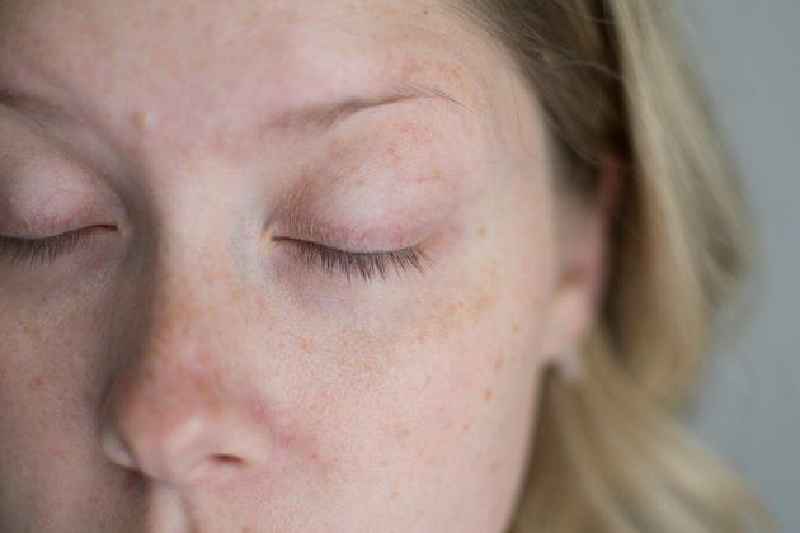Ever wondered if your beloved blonde highlights could actually be thinning your tresses? The question of whether L’Oréal hair color causes hair loss is a common one, swirling around the hair care community with a mix of worry and skepticism. While a vibrant new hue might be tempting, the potential to lose strands in the process is a concern for many.

Image: nutritionless.com
This article delves into the relationship between L’Oréal hair color and hair loss, separating fact from fiction. We’ll explore the chemical components, the potential side effects, and what you can do to minimize any risks. So, let’s dive in and see what the science says.
The Science Behind Hair Color and Hair Loss
Hair loss can be a complex issue with numerous contributing factors. While hair color itself may not be the primary cause, specific ingredients within some products can trigger a reaction in certain individuals. Understanding these ingredients and their potential effects is key.
Chemical Components and Their Effects
L’Oréal, like many other hair color brands, uses a combination of chemicals in their formulations. These include:
- Ammonia: This strong chemical opens up the hair cuticle allowing the color to penetrate deeper. Ammonia can irritate the scalp, potentially leading to inflammation and hair loss.
- Hydrogen peroxide: A powerful bleaching agent that lifts the natural pigment in hair, it can be harsh on hair follicles, leading to breakage and damage.
- Para-phenylenediamine (PPD): A common permanent hair dye ingredient, PPD can cause allergic reactions in some individuals, potentially resulting in hair loss.
- Resorcinol: This chemical helps color molecules attach to the hair shaft. It can also trigger allergic reactions and scalp irritation in some cases.
While these ingredients are common in many dyes and play a crucial role in delivering color, their potency can cause hair damage and potential hair loss.
The Link Between Hair Color and Hair Loss: A Closer Look
The relationship between hair color and hair loss is not a straightforward one. Several factors can influence the impact of coloring on your hair, including :

Image: www.lorealprofessionnel-me.com
1. Hair Type and Condition
Those with naturally thin or delicate hair may be more susceptible to damage from hair coloring treatments. Dry, brittle hair can be more prone to breakage, leading to hair loss.
2. Frequency of Coloring
Frequent use of hair color, particularly with harsh chemicals, can put your hair under constant stress. This can lead to damage, breakage, and thinning over time.
3. Coloring Techniques
Certain techniques, such as bleaching or highlighting, involve strong chemicals that can be damaging to the hair shaft and follicles.
4. Individual Sensitivities
Each individual reacts differently to hair coloring products. Some people are more prone to allergic reactions, scalp irritation, or hair shedding.
5. Underlying Medical Conditions
Hair loss can also be a symptom of an underlying medical condition like alopecia areata.
Minimize Hair Loss Risks While Coloring
While the risk of hair loss from L’Oréal hair color is not necessarily high, certain measures can help decrease the potential for damage:
1. Choose Gentle Formulas
Look for colorants that are ammonia-free, low in peroxide, or contain natural ingredients. L’Oréal offers several gentler options, including their “Casting Crème Gloss” line.
2. Conduct a Patch Test
A patch test is essential to ensure you do not have an allergic reaction to the ingredients. Apply a small amount of color to a discreet area of skin before coloring your entire head.
3. Follow Instructions Carefully
Always adhere to the instructions on the hair color box. Do not leave the dye on for longer than recommended, as this can increase the risk of damage.
4. Condition Regularly
Use a deep conditioner after coloring to help repair and seal the hair cuticle, reducing breakage.
5. Consult a Professional
For significant color transformations or concerns about hair loss, consider consulting a professional hairstylist or colorist. They can assess your hair type and recommend the most appropriate products and techniques.
6. Consider Alternating Coloring Techniques
If you are concerned about the potential for damage, try alternating between colorants and semi-permanent tints, which are typically gentler on hair.
Alternative Hair Coloring Techniques
If you’re looking for a less harsh alternative to traditional hair color, there are other options available including:
1. Henna
Henna is a natural dye derived from a plant that gives hair a reddish-brown hue. It’s a gentler option than chemical dyes, but it may not be suitable for all hair types.
2. Vegetable Dyes
Vegetable dyes are also natural and offer a variety of colors. They are typically milder than chemical dyes, but they may not last as long.
3. Semi-permanent Dyes
Semi-permanent dyes contain fewer chemicals than permanent dyes and last for a shorter time. They are a good option for subtle color changes or those who want to avoid harsh chemicals.
Important Note: Hair Loss Can Have Many Causes
It’s essential to remember that hair loss can happen for numerous reasons, and hair color is just one possible contributor. If you are experiencing excessive hair loss, it’s crucial to consult a dermatologist or trichologist to diagnose the underlying cause and discuss appropriate treatment options.
Does Loreal Hair Color Cause Hair Loss
https://youtube.com/watch?v=UT4jydM399U
Conclusion
While L’Oréal hair color and other brands can offer vibrant and trendy hues, it’s vital to approach coloring with caution, knowing the potential for hair loss. By choosing gentle formulas, conducting patch tests, and following instructions carefully, you can minimize these risks. Ultimately, understanding the science behind hair color, individual sensitivities, and available alternatives empowers you to make informed choices that prioritize both beauty and the health of your hair.





